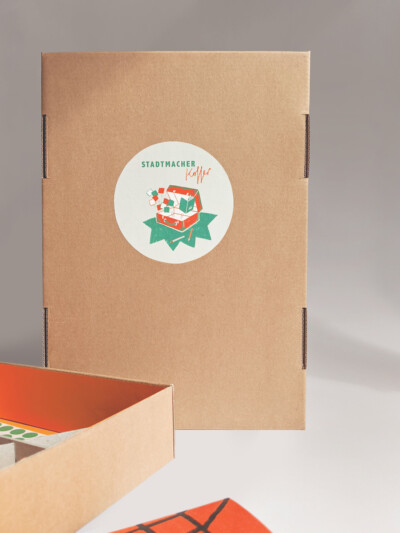
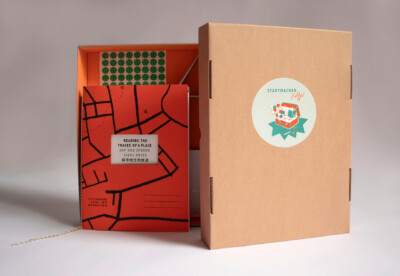
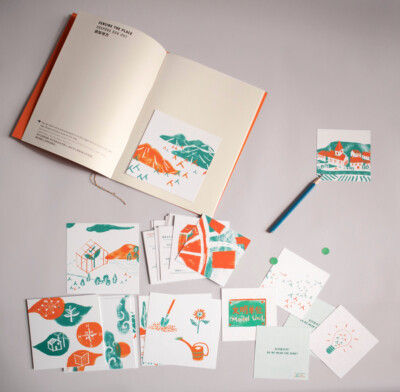

The STADTMACHER-Koffer is a toolkit designed by CITYMAKERS to deepen the dialogue between city-making enthusiasts from Europe and China – as well as all people who are interested in the topic of liveable cities in the Chinese-European context.
Based on many years of CITYMAKERS insights and our experience that context is the key to successful cross-cultural collaboration, the tools are designed to facilitate a deeper understanding of our commonalities and differences and to help us form connections on an eye-to-eye basis. They are meant to lay the groundwork for fruitful conversations and co-creation across cultures. Apart from this exchange of ideas, the toolkit also focuses on urban and rural exploration by taking you to a place of your choice and guiding you on the path of deep reflection about space.
Tools:
- Connecting Cards
- Do we mean the same? (Vocabulary Cards)
- Reading the Traces of a Place
- Landscape Map
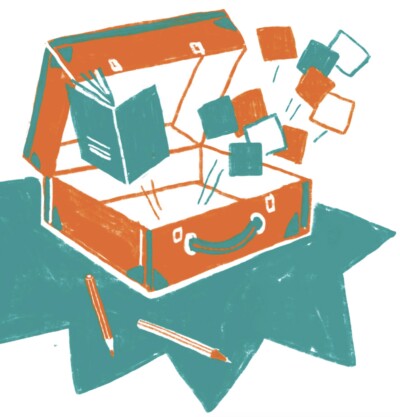
1 – Connecting Cards
This exercise is about getting to know each other through easy but meaningful questions about ourselves and the Chinese-European city-making context allows us to lay a first basis for creative exchange. Suitable in particular as a warm-up and connecting exercise at the start of workshops or networking events.
- Number of participants: 2 people (1:1 dialogue sessions within larger group work)
- Time: approx 15 to 30 minutes
- Materials: Connecting Cards. (Go to the top of this article to download the cards.)
Setup:
Cards are handed out at check-in time, one to each participant, displayed on tables, or handed out by the workshop leader. When the 1:1 connecting session starts, participants choose a partner and ask each other the questions on their card. Swaps possible after 5 or 10 minutes to connect with more people. If the conversation dries up, participants can pick another card. Alternatively, the workshop leader can hand out new cards.
How to use:
Read the question on your card out loud and have your partner answer it. Listen actively and ask questions. Then give your own answer. Continue your dialogue until you receive the next card from the workshop leader. Then start again with the next question.
2 – Do we mean the same thing?
Communication across cultures and disciplines is a challenge. Even when we use the same words, it is not always guaranteed that we are actually talking about the same thing. Matters become even more complicated when two or more languages are involved. In this exercise, we invite you to discuss words from the city-making context and reflect on their different associations and connotations in German and Chinese.
- Number of participants: 3-4 people (per group) from different backgrounds (Chinese and German speakers)
- Time: approx. 30 minutes
- Materials: Vocabulary Cards. (Go to the top of this article to download the cards.)
Setup:
Place the cards in the middle of the table or on the ground, the turquoise side facing up. On the turquoise side of every card you will see either a single word in German and Chinese (word card) or an image (image card).
How to use:
Start the conversation by picking up both a word card and an image card that you think fit together well. Explain your pairing and underlying association to the other members of the group. Do they make the same associations? If not, let them tell you why. Next, turn the word card over and read out the related terms. Choose 2–3 terms and discuss their meaning and translation in the group. When the discussion is over, your neighbor starts a new conversation by choosing another pair of word and image cards.
As an extension you can also develop the tool further by choosing new terms of your choice and creating your own connotation maps with your exchange partner.
3 – Reading the Traces of a Place – DIY Booklet
This tool invites you to explore the character of a place and reflect on the issue of space by interacting with your surroundings. The questions in the booklet will guide you on your journey. They are designed to raise your sensory awareness of a place and alter your experience of spatial cognition. They also allow you to discover facts and the hidden meaning of a place, such as historic traces or its cultural memory.
- Number of participants: unlimited
- Time: a minimum of 45 minutes is recommended, ideally 1.5 – 3 hours.
- Materials: “Reading the Traces of a Place” Booklet (one printout per participant). (Go to the top of this article to download the booklet.)
Setup:
Each participant receives their own “Reading the Traces of a Place” Booklet. Pencils for drawing/writing to be brought along by participants. Drawing skills are not required.
How to use:
Open the booklet, open your senses, follow the instructions – start exploring. Take time to sit here and there along the way to take notes or sketch your observations. If you are in larger groups, decide whether to venture out on solo walks or in small groups, and also on a time to come back to share results in the group.
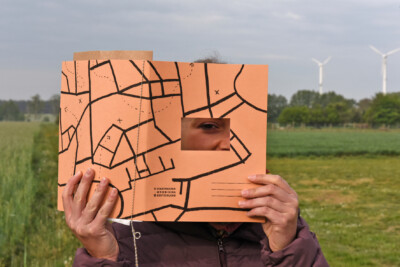
4 – Landscape Map
This tool offers a framework for analysis and orientation in the context of joint projects. Using landscape language as a metaphor, it helps to structure and map out basic conditions in a creative way: What is the status quo? Who are the actors? What is the shared potential? Answers good to know before embarking on any cooperation.
- Number of participants: small teams of 4-6 or larger workshop groups
- Time: about 2 hours
- Materials: “CITYMAKERS Landscape Map” Poster (one printout per small group of 5-6 or one big printout to be hung on the wall). (Go to the top of this article to download the poster.)
Setup:
Maps are displayed as large prints (flipchart size) on tables for small groups, or hung up on flipcharts or walls. Post-it notes that can be shifted around on the map are provided to write down content.
How to use:
The map could be used directly as a framework and trigger for discussion, or it could be used as a template for recollection of the results of a previous discussion or co-creation round.
